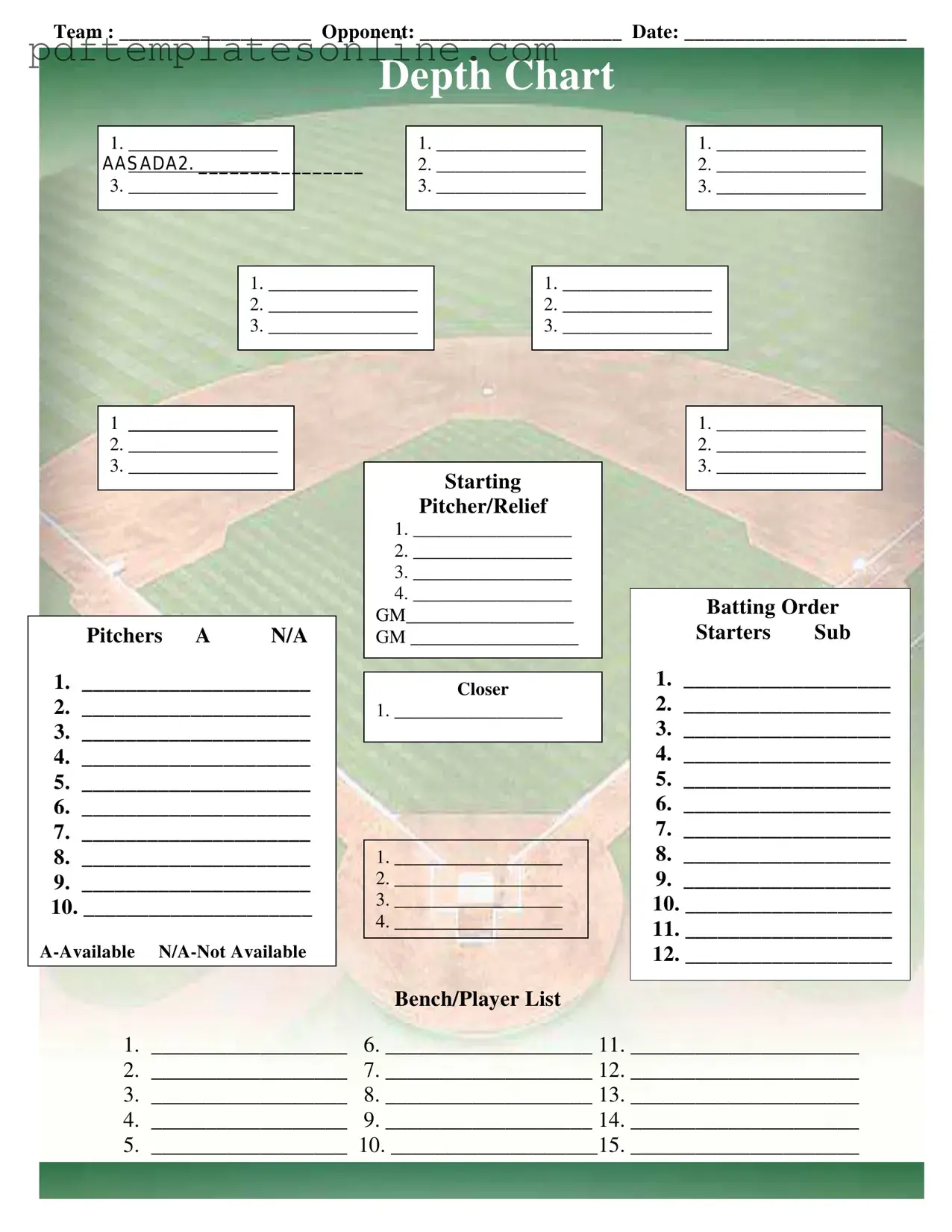Blank Baseball Field Lineup Form
The Baseball Field Lineup form is a crucial tool for coaches and team managers, providing a structured way to organize player positions, batting orders, and pitching assignments for a game. This form captures essential information such as team names, the date of the game, and a detailed depth chart. By utilizing this form, teams can ensure clarity and preparedness for each matchup.
Access Baseball Field Lineup Editor Now
